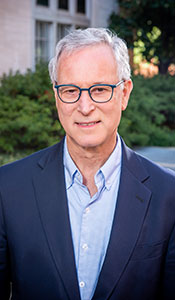Of the more than 3,000 variants that have been identified in the NF1 gene, only a handful of specific variants can be correlated to certain NF1 symptoms. In this post, I’ll discuss the major known correlations between the physical manifestations of NF1 (phenotype) and specific mutations in the NF1 gene (genotype) as well as the clinical value of these correlations in helping to anticipate certain complications of NF1 for more effective management of the condition.
Established Genotype/Phenotype Correlations
NF1 is caused by a genetic variant in the NF1 gene, located on chromosome 17, that encodes for the protein neurofibromin. To make the neurofibromin protein, a cell must first copy information found in DNA into messenger RNA (mRNA) before using the mRNA to make the mature protein. DNA in the human genome consists of a sequence of more than 3 billion bases – called “A,” “T,” “C,” and “G,” which are the letters of the genetic code. The genetic information is encoded in successive triplets of these bases to form “words,” called “codons,” each representing either a specific amino acid (building block of a protein) or a stop signal in the protein chain, similar to the period at the end of a sentence. A genetic variant consists of a deviation from the typical base sequence; this can be a change in a single letter in a codon, or a loss or gain of bases in the DNA sequence. Most variants in the NF1 gene that lead to NF1 cause either a failure to produce neurofibromin at all or result in a neurofibromin protein that is non-functional.
As more NF1 variants have been identified, an important question that has emerged is whether specific manifestations of NF1 can be predicted to occur in persons with certain genetic variants. The answer is that most of the time, variants in the NF1 gene do not predict specific NF features or the severity of the course of the condition; however, a few variants have been identified that can be correlated with specific NF1 features. Many of the clinically relevant genotype/phenotype correlations have been identified through research directed by UAB Professor of Genetics Ludwine Messiaen, Ph.D. in the UAB Medical Genomics Laboratory (undefined).
Following is a brief description of known genotype/phenotype correlations:
- Whole gene deletion. In 3% - 5% of persons with NF1, the entire NF1 gene has been deleted, i.e., is no longer present in the DNA sequence. This usually produces a severe form of NF1 characterized by the appearance of skin neurofibromas earlier in life than usual as well as the development of larger number of tumors than usual. Individuals with whole gene deletions often have distinctive facial features, are taller than average, and may have loose skin on the palms and soles. Individuals with a whole NF1 gene deletion are also at an increased risk of developing malignant peripheral nerve sheath tumors (MPNSTs). It is believed that some of these complex features are due to the fact that the deletions encompass not only the NF1 gene, but several additional nearby genes.
- Mutation of amino acid at codon position 1809. Individuals with this specific variant have a physical appearance that overlaps with another condition called Noonan syndrome, including distinctive facial features, short stature, developmental delays, malformations of the bones of the rib cage, and pulmonic artery stenosis (a narrowing of the artery from the heart to the lungs).
- Mutations at codon positions 844-848. Research led by Dr. Messiaen at the UAB Medical Genomics Laboratory has established that several variants at these locations in the NF1 gene result in a severe form of NF1 with features that include: a high incidence of benign tumors on peripheral nerves and/or pressure of the spinal cord; tumors of the optic nerve; and skeletal abnormalities. These individuals also have a higher risk of developing malignancies compared with the general NF1 population.
- Deletion of codon at position 992. This variant results in deleting the amino acid methionine. Individuals with this variant have café-au-lait spots and learning disabilities, but they do not develop neurofibromas. Some have been reported to develop gliomas, although at a low frequency compared with others with NF1.
- Mutations at codon positions 1149, 1276, and 1423. All of these variants result in features of Noonan syndrome. In addition, individuals with mutations at position 1276 often develop spinal neurofibromas, and those with mutations at position 1423 are also more likely to develop pulmonic stenosis.
- Other correlations have been suggested, for example related to whether the variant occurs near the beginning or the end of the gene, though these have been less thoroughly validated. Still others may remain to be elucidated, particularly for less common mutations that are seen in very few affected individuals.
The Clinical and Research Value of Genotype/Phenotype Correlations
While these well-established genetic variants have a correlation to specific clinical features of NF1, most mutations do not predict specific manifestations of the condition or disease severity. For people with a known genotype/phenotype correlation, this information can be clinically valuable because certain complications can be anticipated with the potential of managing the condition more effectively. When these variants are identified, clinicians can be more vigilant for certain problems, such as an increased risk of malignancies. Also, a known genotype/phenotype correlation provides information about how the gene works and may lead to answers regarding why some genetic variants result in specific features of NF. The UAB Medical Genomics Laboratory, led by Dr. Messiaen, is utilizing a repository of around 3,000 NF mutations, the largest in the world, for determining additional genotpye/phenotype correlations. Some of these variants are being reproduced in animal models to observe manifestations of NF correlated with these changes; other studies involve developing a cell culture system that will help to determine the way specific genetic variants alter function within the cell. These studies will yield information about the ability of specific variants to cause NF1 and will also provide a framework to test new treatment approaches.
